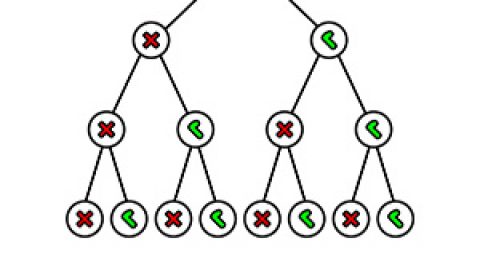When developing a video game, one crucial decision that project managers have to make is selecting the most suitable development methodology. There are a variety of methodologies available, each with its own strengths, weaknesses, and ideal use cases. Three such methodologies are Scrum, the Critical Path Method (CPM), and Spiral Development. The best fit depends heavily on the specifics of the game being developed, such as its complexity, the predictability of tasks, and the tolerance for risk. Let’s delve into how each methodology might apply to different video game development scenarios, using hypothetical examples.
Scrum
Scrum is a subset of the Agile methodology and emphasizes collaboration, functional software, team self-management, and the flexibility to adapt to emerging business realities.
Strengths:
- Frequent feedback: The team is in constant communication about what’s working and what’s not.
- Flexibility: Scrum allows the team to rapidly respond to changes and new requirements. This is particularly valuable in video game development, where elements might need to be tweaked based on testing and user feedback.
- Incremental delivery: Working software is delivered in small increments, which can keep stakeholders engaged and reassured of progress.
Weaknesses:
- Need for discipline: Scrum requires a highly disciplined team to stick to the rules and practices, and teams without this discipline can struggle.
- Requires skilled Scrum masters: The Scrum Master needs to understand and be able to implement Scrum effectively.
- Not ideal for fixed deadline projects: Since Scrum encourages flexibility and adaptation, it may not be suitable for projects with a strict deadline or fixed requirements.
An example of a game that might benefit from the Scrum approach is “Among Us,” developed by InnerSloth. Given the game’s iterative nature and the constant addition of new features, maps, and balance changes, a flexible Agile methodology like Scrum is fitting. Developers can gather player feedback and rapidly iterate on that feedback, which keeps the game fresh and engaging. Also, the game’s unexpected surge in popularity during the COVID-19 pandemic would have required a nimble response from the development team to handle the increase in user base and feedback.
Critical Path Method (CPM)
The Critical Path Method (CPM) is a project modeling technique developed in the late 1950s. It’s usually used with projects that have a well-defined sequence of activities and dependencies.
Strengths:
- Efficiency: CPM can help to identify the most efficient schedule for a project. This can be especially useful for video game development where certain tasks cannot proceed until previous tasks are completed.
- Cost savings: By identifying the critical path, CPM can help to allocate resources most effectively to avoid waste.
- Risk mitigation: It can help in identifying potential risks and bottlenecks in the project.
Weaknesses:
- Lack of flexibility: CPM works best with projects that have predictable, linear workflows. However, video game development often involves a lot of iteration and change, which can disrupt the critical path.
- Overemphasis on the critical path: While it’s necessary to focus on the critical path, other important aspects of the project could be neglected.
- Requires accurate estimation: Estimating the duration of tasks accurately can be difficult in a creative endeavor like video game development.
When you have a game with a predictable and linear development process and a fixed release schedule, the Critical Path Method (CPM) can be a better fit. Annual sports video game franchises such as “Madden NFL” make for a good example. These games have a stable foundation to start with, and each year’s enhancements or additions are often incremental, reducing the overall project risk. The CPM can help manage the sequence of tasks efficiently to ensure the game is ready for its annual release.
Spiral Development
The Spiral Model is a risk-driven software development process model that is a blend of iterative and waterfall development models.
Strengths:
- Emphasis on risk analysis: This is particularly relevant to video game development, where projects can be highly complex and filled with uncertainties.
- Flexibility: It allows for iterative refinement, making it possible to change the project scope based on learning from earlier cycles.
- Ideal for large and complex projects: It’s a good fit for big, ambitious video game projects that have a high degree of risk and where cost and schedule are secondary to functionality.
Weaknesses:
- Requires risk assessment expertise: The success of the Spiral model largely depends on the team’s ability to identify and manage risk.
- Can be expensive: Due to its emphasis on risk and iteration, it can potentially be more expensive than other methodologies.
- Time consuming: It may not be suitable for projects with tight deadlines, as the emphasis on risk analysis and iteration can extend the project timeline.
A larger, riskier project like “No Man’s Sky” by Hello Games might have benefited from a Spiral Development approach. Initially, the game received a lot of criticism due to unfulfilled expectations and missing features. The developers then spent years updating and refining the game, ultimately creating a product much closer to the original vision. The constant iteration and significant risks associated with developing such an ambitious game align well with the principles of Spiral Development. Using this method from the start might have helped better manage expectations and deliver a product that was more complete upon initial release.
That’s a Wrap
In conclusion, choosing the right development methodology can significantly influence the success of a video game project. Whether it’s the adaptability of Scrum, the structured efficiency of CPM, or the risk-focused and iterative nature of Spiral Development, each approach offers unique advantages. The examples of “Among Us,” “Madden NFL,” and “No Man’s Sky” illustrate how these methodologies can be tailored to suit different game development scenarios. Yet, it’s essential to remember that there are many factors at play, and the choice of methodology is just one element among many that can determine a project’s success. By understanding the strengths and limitations of each method, developers can make informed decisions that best serve their project’s needs and ultimately create engaging and enjoyable video games.










